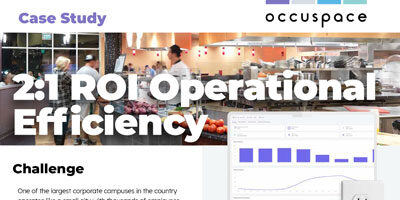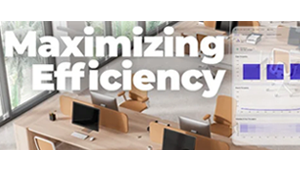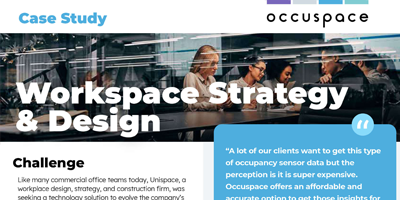08/02/24 - One of the largest corporate campuses in the country operates like a small city with...
The New Metrics of Workplace Efficiency in a Hybrid Era
1/7/25

The shift to hybrid work has transformed how organizations measure and manage workplace efficiency. Traditional metrics like cost per square foot or cost per seat are no longer sufficient to capture the complexities of modern office dynamics. As work behaviors evolve, new, nuanced indicators are emerging to help companies understand space utilization and its impact on both efficiency and effectiveness.
One of the most promising metrics is cost per use. This forward-thinking approach examines how often and for how long spaces are utilized, offering a more precise view of their value. Cost per use shifts the focus from static occupancy rates to dynamic behavior patterns—how employees interact with spaces and each other. By blending efficiency (cost savings) with effectiveness (space performance), companies can align their real estate strategies with employee needs and organizational goals.
Finding the Vibrancy Sweet Spot
“Occupancy levels between 67% and 100% are ideal for fostering vibrant, collaborative environments.”
Occupancy vibrancy is another critical factor in workplace success. As Kimberly Castle from CBRE emphasized, occupancy levels between 67% and 100% are ideal for fostering vibrant, collaborative environments. Below this range, spaces can feel disengaged and isolating; above it, overcrowding can lead to discomfort and inefficiency. Striking this balance transforms offices from mere places of work into destinations that energize employees and encourage connection.
At Occuspace, we encourage this engagement by providing real-time utilization insights to the end user. Providing visibility into both vibrant and quiet spaces allows employees to make informed decisions that best support their changing work preferences, offering them more dynamic support and a broader range of choices in their work environment.
Effectiveness vs. Efficiency
Efficiency traditionally focuses on minimizing costs and waste, but the hybrid model demands a broader perspective. Effectiveness—ensuring spaces work well for their intended purpose—is equally vital. Metrics like dwell time (how long employees stay in a space) and team-based occupancy (which groups use spaces and when) provide actionable insights into space optimization. These data points help companies design environments that enhance productivity, collaboration, and the overall employee experience.
The Role of Real-Time Data
“By focusing on what truly matters—how spaces meet the needs of their users—organizations can drive meaningful change.”
Data integration is revolutionizing workplace management. Tools like badge systems, reservation platforms, and occupancy sensors generate valuable insights, but their real power lies in integration. When combined, these systems reveal how spaces support both people and business objectives. For example, tracking dwell times alongside reservation data can highlight underutilized areas and identify opportunities for improvement. By focusing on what truly matters—how spaces meet the needs of their users—organizations can drive meaningful change.
Furthermore, using real-time occupancy data to control HVAC and lighting systems allows companies to reduce CO2 emissions by adjusting these systems based on current needs. For instance, floors with low occupancy can be permanently "mothballed" — reducing power consumption — or people can be dynamically redirected to occupy fewer floors, actively supporting enhanced operational efficiency and contributing to CO2 reduction efforts. This strategic use of data not only ensures optimal use of space but also aligns with broader environmental sustainability goals.
The Path Forward
Modern workplace metrics like cost per use, vibrancy, and effectiveness represent the future of space management. They help organizations balance supply and demand while fostering environments that inspire work and collaboration. Hitting the sweet spot in occupancy levels is not just an operational goal—it’s the foundation of a thriving workplace. Companies that embrace these data-driven approaches will gain a competitive edge, crafting spaces that not only function efficiently but resonate deeply with their people.
By combining advanced metrics with actionable insights, organizations can reimagine their workplaces to better support the dynamic needs of today’s workforce. The time to evolve is now.
Your comments, thoughts and ideas are welcome.
--- Occuspace Team
Occuspace provides an affordable, easy-to-deploy occupancy monitoring system that can accurately measure real-world space utilization patterns while preserving occupant privacy. To learn more, visit us or set up a free consultation at https://web.occuspace.io/
Stay Informed - Subscribe Today!




